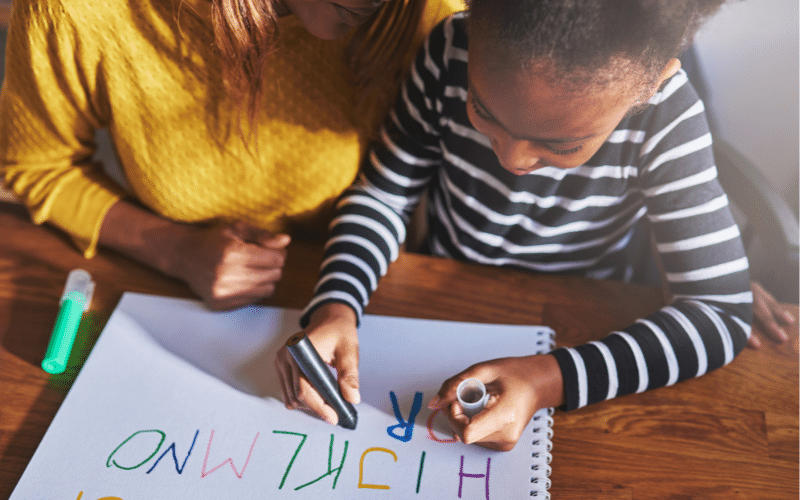Social Learning Theory: How Bandura’s Theory Works
Social learning theory, also known today as social cognitive theory, is a theory proposed by psychologist Albert Bandura that explains how people learn through observation, imitation, and modeling. This model of learning suggests that both environmental and cognitive factors play a critical role in the acquisition of knowledge. In this article, learn more about the…

Social learning theory, also known today as social cognitive theory, is a theory proposed by psychologist Albert Bandura that explains how people learn through observation, imitation, and modeling. This model of learning suggests that both environmental and cognitive factors play a critical role in the acquisition of knowledge.
In this article, learn more about the basics of social learning theory and how people learn by observing others.
What Is Social Learning Theory?
Behaviorism was the dominant school of thought in psychology for much of the first half of the 20th century, advocated by thinkers such as John B. Watson and B. F. Skinner. According to the behavioral perspective, learning is the result of conditioning through association reinforcement.
While Bandura agreed that classical conditioning and operant conditioning were important for learning, he noted that these processes alone could not account for all examples of learned behavior. For example, people are often able to demonstrate that they have learned something even if they have no direct experience with it.
According to Bandura’s social learning theory, people can also learn simply by observing the actions of others.
This theory extended behavioral ideas about learning by adding a social component. As Bandura once suggested, learning would be time-consuming, laborious, and even dangerous if you could only acquire knowledge through direct experience.
Bandura’s Bobo Doll Experiment
During the 1960s, Bandura conducted a series of famous experiments that came to be known as the Bobo doll experiment. The experiments involved having children observe an adult interact with a Bobo doll, a large inflatable toy that resembles the shape of a bowling pin. If tipped over, the doll returns to its original upright position.
When children observed the adult acting aggressively or violently toward the doll, the kids were more likely to imitate these behaviors when they were later allowed to interact with the doll.
The research served as a basis for Bandura’s social learning theory and the important role that observational learning plays. The study also had an impact on the conversation about how the violence that children observe in the media may impact their behavior.
Bandura dubbed his approach social learning theory when it was first introduced in 1977. He continued to develop his ideas and renamed his approach social cognitive theory in 1986.
Components of Social Learning Theory
Bandura proposed that some key elements were essential for the social learning process.
Observational Learning
The observational learning process is the cornerstone of Bandura’s model of learning. While this might immediately call to mind direct observation, you don’t necessarily have to actually witness an action being performed to learn through observation.
There are three primary types of observational modeling situations:
- Directly observing a live model perform and action, such as watching an instructor teach how to cook a dish
- Symbolically observing a character perform an action, such as reading about a fictional character
- Verbal instructions that explain how behavior might be performed, such as listening to a podcast that explains how to do something
It’s important to note that not all learning is easily observable. People can learn information even if they do not have to demonstrate that knowledge by performing it directly.
Emotion, Motivation, and Self-Efficacy
Bandura also believed that inner states could affect the social learning process. Cognitive influences, including your emotional states, moods, and thoughts, can affect your attention, motivation, and willingness to learn.
Social experiences can also affect your sense of self-efficacy, which is your belief in your ability to perform a test or achieve a goal. Having a strong sense of self-efficacy can help you choose goals, initiate actions, and persist in the face of obstacles.
Observing people do something successfully can influence your sense of self-efficacy. When you watch them succeed, it can inspire your own belief in your ability to be successful as well.
Factors That Affect Social Learning
Several factors can affect how observational occurs. Not everything we see or hear is learned or learned well. According to Bandura, some important elements affect the observational learning process:
- Attention: To learn something through observation, it needs to be the focus of your attention. Being distracted during the learning process can affect how well the information is learned.
- Retention: Observational learning also hinges on your ability to remember what you have observed.
- Reproduction: The next step of the process involves reproducing the behavior you have observed. While not all observational learning requires demonstrating the behavior, practicing can be helpful for the learning process.
- Motivation: Observational learning is also affected by motivation. This can include behavioral processes such as reinforcement and punishment. If you observe somebody else being rewarded for performing a behavior, it is more likely that you will also perform that behavior again in the future.
Uses for Social Learning Theory
As you might imagine, social learning theory has a number of practical applications. Some of these include:
- Parenting: Parents can use social learning to model behaviors that they want their children to learn.
- Education: Teachers can utilize principles of social learning theory to help teach children in classroom settings. Not only can the teacher serve as a model, pure models can also play an important part in observational learning.
- Therapy: social learning can also be important in the therapeutic process. Therapists can model appropriate behaviors, and peers can also model these behaviors in group therapy settings.
- Media messages: Social modeling also has the potential to have a positive effect on persuasive public health messaging. Encouraging people to engage in healthy behaviors can often be effective. However, researchers also suggest that media influencers can sometimes play a negative role. The debate over the impact of violence in mass media is one example of how observational learning might have a detrimental impact on behavior.
Summary
Social learning theory is a major theory of development that explains the importance of social factors in the learning process. While Bandura felt that behavioral factors such as conditioning processes did play an important role in learning, he felt that behaviorism neglected other important parts of this process, including social influences and cognition.
Social learning theory continues to play an important role in psychology today. Bandura proposed that this approach could play a part in helping people adopt healthier behaviors and inspire people to take action to address problems such as climate change.
Sources:
Bandura A, Ross D, Ross SA. Imitation of film-mediated aggressive models. The Journal of Abnormal and Social Psychology. 1963;66(1):3-11. doi:10.1037/h0048687
Bandura A. Social Learning Theory. Englewood Cliffs: Prentice-Hall; 1977.
Bandura A. The Social and Policy Impact of Social Cognitive Theory. In Mhttps://doi.org/10.1037/h004868710.1037/h0048687. Mark, S. Donaldson, & B. Campbell (Eds.), Social Psychology and Evaluation. (pp. 33-70). New York, NY: Guilford Press; 2011.
Cook DA, Artino AR. Motivation to learn: an overview of contemporary theories. Med Educ. 2016;50(10):997-1014. doi:10.1111/medu.13074
Fryling MJ, Johnston C, Hayes LJ. Understanding observational learning: an interbehavioral approach. Anal Verbal Behav. 2011;27(1):191-203. doi:10.1007/bf03393102
Overskeid G. Do we need the environment to explain operant behavior? Front Psychol. 2018;9:373. doi:10.3389/fpsyg.2018.00373





